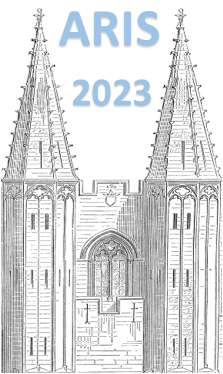Orateur
Description
Shell gaps represent the backbone of nuclear structure and are a direct fingerprint of the in-medium many-body interactions. The nuclear shell structure is found to change, sometimes drastically, with the number of protons and neutrons, revealing how delicate the arrangement of interacting nucleons is. The neutron-rich $\it{pf}$-shell nuclei have received much attention on both experimental and theoretical fronts with the possible appearance of new subshell closures at $\it{N}$ = 32 and 34. The N = 32 subshell closure has been reported in the region from Ar to Cr isotopes based on E(2$^{+}_{1}$), transition probability, and mass measurements. However, the laser spectroscopy of Ca and K isotopes reveals an increase of the charge radii with a slope larger than expected from $\it{N}$ = 28 to $\it{N}$ = 32 and 33, which were interpreted to challenge the magic character of $\it{N}$ = 32. For the $\it{N}$ = 34 subshell closure, experimental evidence favors a new doubly-magic nucleus $^{54}$Ca with a neutron subshell closure at $\it{N}$ = 34, although the systematics of E(2$^{+}_{1}$) and B(E2; 0$^{+}_{1}$ $\rightarrow$ 2$^{+}_{1}$) in Ti and Cr isotopes does not show any evidence for the $\it{N}$ = 34 magicity. It is natural to ask how the $\it{N}$ = 34 subshell evolves below $\it{Z}$ = 20 towards more neutron-rich systems, such as $^{52}$Ar.
In this presentation, I will present the quasi-free one-nucleon removal measurements performed at the RIBF facility using the MINOS and DALI2 set up to study the $\it{N}$ = 32 and 34 shell gaps in Ca and Ar isotopes. The $^{52}$Ca$(p,pn)$ reaction in inverse kinematics was performed at $\sim$230 MeV/nucleon. The measured partial cross sections and momentum distributions support the doubly-magicity of $^{52}$Ca. The analysis of the momentum distributions leads to a difference of the root-mean-square radii of the neutron 1f$_{7/2}$ and 2p$_{3/2}$ orbitals of 0.61(23) fm, in agreement with the modified-shell-model prediction of 0.7 fm suggesting that the large root-mean-square radius of the 2p$_{3/2}$ orbital in neutron-rich Ca isotopes is responsible for the unexpected linear increase of the charge radius with the neutron number. The low-lying structure of $^{52}$Ar was extracted using the $^{53}$K$(p, 2p)$ reaction. The 2$^{+}_{1}$ excitation energy is found at 1656(18) keV, the highest among the Ar isotopes with $\it{N}$ > 20. This result is the first experimental signature of the persistence of the $\it{N}$ = 34 subshell closure beyond $^{54}$Ca. Shell-model calculations with phenomenological and chiral-effective-field-theory interactions both reproduce the measured 2$^{+}_{1}$ systematics of neutron-rich Ar isotopes and support a $\it{N}$ = 34 subshell closure in $^{52}$Ar.

